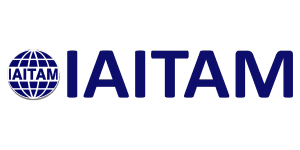Measuring ITAM Success – How Successful is Your IT Asset Management Program?
By Marjorie Hobe & Taylor Herschleb, ITAM Professional
If management asked you to show the value of the organization’s IT Asset Management (ITAM) program, could you provide quantifiable results? Your answer to this question will probably be “no” if a set of key performance indicators (KPIs) or metrics have not been established and/or tracked on a regular basis.
This leads to the next question: how do you know if implemented processes or decisions made are the most effective if there is no way to measure its success? The answer to this question is you can’t determine their effectiveness. Think about it. If you have no measurement tools in place to measure the level of success or failure, it is like running a race blindfolded. You can be running as fast as possible, but you do not know if you are running in the right direction or of your overall performance level in the race.
Gartner states “metrics, critical success factors and KPIs are essential to understanding the success or failure of an ITAM program.” ITAM programs can be a valuable asset to any organization by quantifiably measuring the benefit or disadvantage of business decisions or projects. When decisions or projects are measured, the results can be used to show the effect to the organization’s overall bottom line.
Total Cost of Ownership
The most widely used measurement in ITAM programs is the Total Cost of Ownership (TCO). TCO is a comprehensive metric which not only accounts for the initial procurement costs, but also the costs to maintain and later dispose of assets. TCO should account for the hard and soft costs associated with assets. The particular depth of the TCO varies by organization. Some organizations only require a high-level calculation while other organizations require a very detailed analysis incorporating costs such as the amount of heat generated by the assets resulting in an increase in the need for more air conditioning usage.
Items to consider including into the TCO are
- Depreciated cost of the asset or lease payments,
- Labor cost of imaging/loading of the asset and deployment,
- Cost of maintaining the asset through break/fix labor and parts,
- Labor cost of ordering the equipment,
- Help desk support,
- Cost off base loaded software,
- Training, and
- User support.
Regardless of the depth by which the organization chooses to go, TCO will provide a centralized picture of what an asset truly costs the organization. As models or manufacturers change, tools, processes and projects are implemented; the costs involved in the TCO will fluctuate to accurately portray how the change affected the overall cost of an asset. An example of how TCO could be used to measure the success of a change is an organization’s migration to a new computer manufacturer. The TCO results of the old manufacturer can be used as the baseline for the new manufacturer. As TCO reporting periods go by, the success of the change is measured against the baseline and all previous reporting periods. From a support perspective, it can help determine if outsourcing is truly economical. The same can be done before implementation as an evaluation of how TCO will change. For example, a calculation for the additional cost of certification of technicians or the increase or decrease in cost of vendor repairs may be used to evaluate whether the TCO will spike and settle lower or higher or the TCO will go up long term. This type of evaluation is not as precise as ROI or NPV but it does serve as a potential point of evaluation for the switch.
Service Levels
Another area of measurement for an IT Asset Manager is an organization’s service levels. The impact on service levels from a change can have a huge implication, positive or negative, to the organization’s bottom line. The more time an end-user is down due to a computer issue, the greater the opportunity cost. For example, if a sales person is unable to use their laptop due to a faulty motherboard, there is a high risk of losing sales because that sales person does not have the tools to accomplish their job successfully. By tracking up-times and specific hardware malfunctions, trending can be accomplished to identify potential faulty hardware by asset manufacturer and/or model. These results can be used to proactively correct hardware issues before the issues come to fruition and cause potentially disastrous effects.
Another area where service levels could affect the organization’s bottom line is with the impact to the help desk. Some organizations outsource their help desk and pay per call. If a change to an organization’s asset portfolio, hardware or software occurs, it may have a direct impact on the number of calls the help desk receives.
Other Possible Measurement Tools
The list of possible measurement tools and performance indicators is infinite and really is dependent on the organization’s internal and external environmental factors. However, some areas an IT Asset Manager can explore to identify possible items to measure are:
- Level of compliancy with software licensing,
- Cost avoidance for acquisition through redeployment,
- Physical Inventory,
- Labor cost trending,
- Number of problem tickets, and
- Cost of software maintenance programs.
Key Performance Indicators
Key Performance Indicators are industry and organization specific. It is recommended that IT Asset Managers work with fellow managers and upper management to ensure KPIs align with the organizational objectives and overall organizational KPIs, if available. KPIs can be detail-level Operational KPIs, high-level Strategic KPIs or a combination of both (see Figure 1).
Whichever level of detail your ITAM program chooses, tracking KPIs and metrics on a regular basis can provide an organization a better depiction on what effect costs have on IT and the entire organization.
